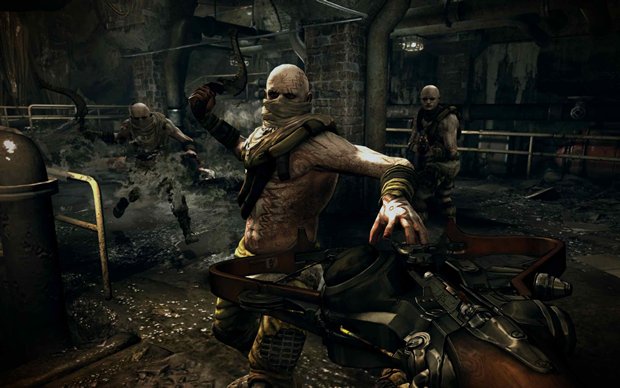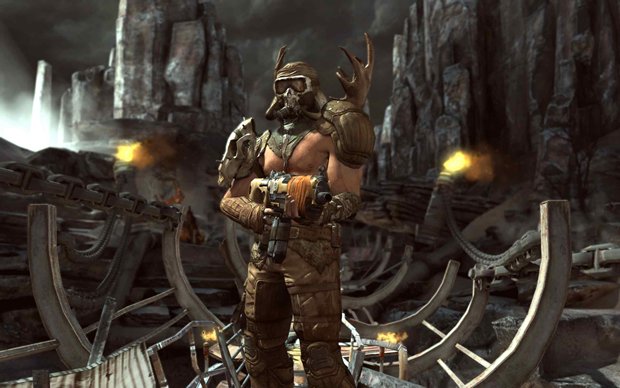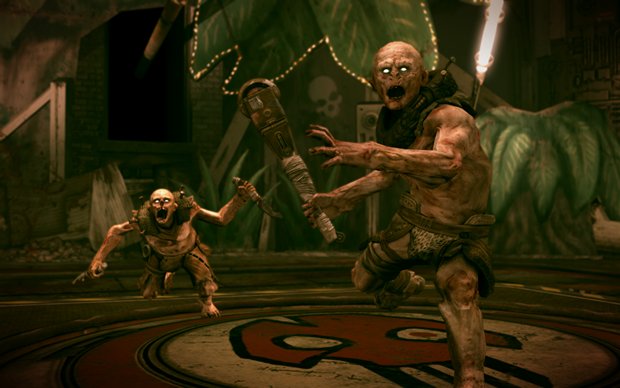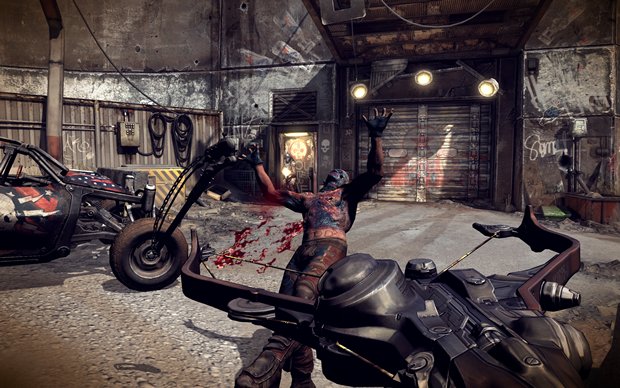RAGE: Five very important things we've learned from the opening two hours
Forget what you know. Here's what you REALLY need to know
There are certain things that everybody probably now knows about Rage. It's the first 'proper' game inseven years from Doom creator id Software. It's a post-apocalyptic shooter. It looks a lot like Borderlands. It's one of the most beautiful games ever to exist thus far. All that, you probably know. I knew it, going into my lengthy hands-on session the other day, but one simple piece of knowledge eluded me. I had one simple, but very important question. What the helldoes Rage actually feel like to play?
You see up to this pointit's remained a bit unclear as toexactly what Rage is. Is it an FPS? Is it an RPG? Is it an open-world game? Is it all of the above, and if so, why should we care if it's just a more brightly-coloured Fallout 3? Fortunately,this particularsession comprised of me being given a near-finished copy of the game, two hours, and being allowed to play through unrestricted, from the very start, until the time ran out. I know all about Rage now. I know how it looks, I know how it feels, I know exactly how it plays. Hell, I could almost tell you how it smells. And I'd like to communicate all of that information to you right now, barring perhaps the last bit.
Here are thefive big things you need to know.
1. It%26rsquo;s not an RPG, but it is
Rage is not Fallout 3. It is not Borderlands either. Understandable preconceptions, given that it’s a semi-open-world shooter set in a post-apocalyptic landscape and published by Bethesda, but fortunately for all concerned, Rage is not those games. Not that I don’t love those games, but Rage is something very different, something very fresh, and something all of its own.

First and foremost, it’s an id FPS. It’s about fast, meaningful, confrontational gunplay and sharp, emergent, second-to-second experiences. Its combat levels may be strewn around a large, organic, post-apocalyptic map, but each one is designed and structured like a level from a linear FPS. There’s no simple RPG grinding through waves of mooks along generic corridors here. If you played any level without knowledge of the overall game structure around it, you’d think you were playing a ‘normal’ shooter. It’s as simple as that.
Not that the land between levels is an empty hub-world by any means. There’s plenty going on in terms of architecture, human contact, and suspiciously ramp-like dunes to jump when you have a vehicle. And some missions evenbleed both elements of thegame together, such as a fortified road blockade that needs its inhabitants sniping out before the levels beyond it become accessible. Overall though, in terms of the delivered player experience, Rage feels much more structured and designed than the looser, more free-form offerings of a western RPG. And personally I love that. The price you pay for a vast freedom of exploration is usually a generic sameness of form and pace, so I welcome Rage’s middle-ground between open-world scale and ‘real’ game design with open arms.

But while Rage is indeed an FPS dragging up in the outer clothing of an open-world game, there is a satisfying amount of character development to be had. There’s no levelling or attribute-point juggling to worry about, but there are equipment, ammo and armour shops to augment the tasty combat tools you find on missions or unlock as a result of completing them. For instance, in the first big shopI found, about an hour and a half in, I found multiple types of new pistol ammo, along with schematics for even newer types of ammo, a shotgun capacity mod, a bunch of armour upgrades and three different outfits with different properties ranging from purchase discounts to improved defence to enhanced engineering skills.
Sign up to the GamesRadar+ Newsletter
Weekly digests, tales from the communities you love, and more
Engineering? See it as a basic crafting system, like the one in BioShock. Find the right crap, stick it together and you can make all kinds of ammo and tools. Probably won’t be a massively complicated or even particularly vital deal, but it’s good that it’s there. And it acts as a nice analogue for the game in general. RPG-lite elements augmenting a proper, meaty FPS. That’s pretty much what Rage is. And speaking of which…
2. It%26rsquo;s a pure,balls-out FPS. But it isn't
If there’s one thing that typifies id Software as a developer (aside for arch technomage John Carmack’s unerring ability to squeeze super-computer processing out of anything with circuits, using coding which defies the very laws of physics), it’s the blunt, visceral, meaty satisfaction of its shooting. No-one evokes the immediate aftermath of lead rapidly impacting with meat like id. Whether it’s the explosive red mist of an insta-gib Quake 3 railgun shot or the wet, weighty thud as you throw around a Doom 3 zombie with a close-range shotgun blast, no-one does more affecting first-person shooting.

And despite the developer’s many previous successes, Rage is yet another step up. The stunning emergent reactions of your enemies as bullet tears through flesh are startling. This is particularly evident with the acrobatic Ghost bandits, each shoulder-flinch, stumble and off-balance stagger you inflict cutting through and modifying their smooth, leaping, rolling assaults with utterly believable effects on their direction and inertia. It’s as physical and immediate a feedback to your actions as you could dream of.
But there’s much more to Rage than simply mulching through a procession of lolloping blood-bags (though the splatter itself is brutally vivid). This is an id shooter with brains and tactical play. Working your way through a bandit hideout can be done with an eclectic variety of approaches. Of course, you can ready your shotgun and carve a path right through, and that’s satisfying enough for all of the beautifully bloody reasons listed above. But even more satisfying is to think your way through the environment using the right weapon, the right equipment and even the right stance at the right time.

Rage is no Metal Gear stealth exercise. It’s a first-person shooter at the end of the day. But while not demanding the calculated discipline of a dedicated stealth game, it provides far more organic options. Crouched sneaking will let you reccy a potential skirmish zone before acting, much like a more localised Far Cry (though lesslocalised once you get the monocular telescope augmentation). But it’s not just a case of hanging around the edges of a room under cover. Rage’s twisting, labyrinthine level layout will often provide a sneak peak of upcoming terrain to the observant.
A tiny crack in a wall might give way to a view of the presently-unaware opposition kicking back a couple of rooms ahead, allowing you to plan your execution of the guys in the corridor previous to them according to the potential knock-on effect. Or a broken top-floor wall might look down upon a currently inaccessible courtyard full of mooks. You can crouch down and sneak past. Or you could stealth-kill a couple with the silent wingstick boomerang to even the odds.Or you couldjust open up with a volley of grenades, wipe the lot of them, and loot their bodies when you eventually find your way dowm there. The choice is yours.
Above: This. This ishow shit goes down in Rage
A large part of the reason all of this works is Rage’s surprisingly excellent AI. While initial impressions are a little disappointing, thanks to the more melee-focused Ghosts’ none-too-subtle ‘get up in your face and smash you to bits’ tactics, in truth Rage’s opposing forces are far more sophisticated and far more convincing than the single-minded swarm AI many still associate with id’s work.
They’re certainly aggressive, but they’re in no way all bravado. They’ll attack on sight (or sound, or in fact any kind of disturbance you leave, so you’ll have to be very careful), but they’ll also react should you get the upper hand, physicality becoming less confident, leading to an eventual retreat further back into their lair if you can keep the pressure on. No enemies in Rage seem to have set rooms or areas of attack. Once triggered the whole level becomes theirs and they’ll spontaneously pull back to find new cover, regroup, or even consolidate their numbers with enemies further back in the area. It adds a brilliant psychological to-and-fro to ongoing combat, and a wonderfully organic feel to each level as a whole.



